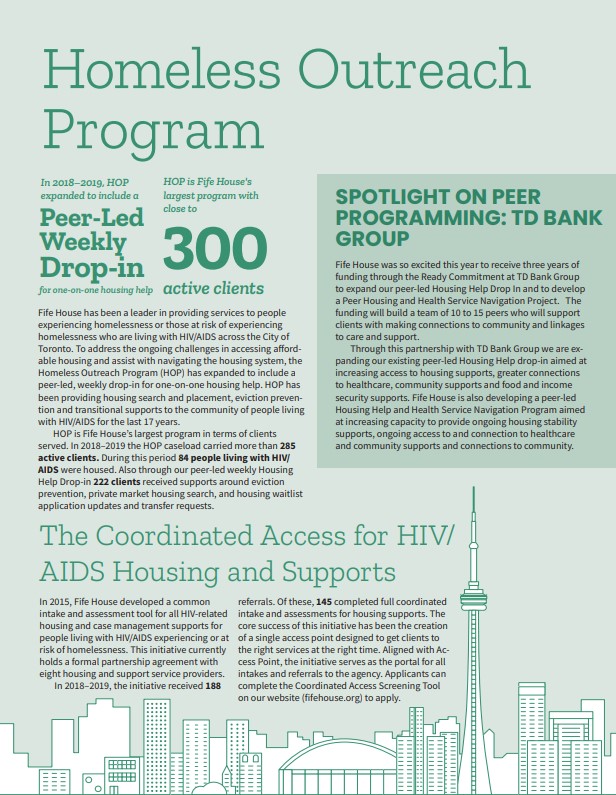There are many ways to provide outreach services, but what kind of outreach best fits your needs? The approach you choose will depend on the nature of your initiative and how you want to reach “yet-unreached” people. Some approaches involve providing health services and products to people in their homes or communities. Others include one-on-one interaction with individuals. Outreach services for job seekers, for instance, may provide guidance on filling out job applications.
Also Read: Bagged packaged goods
Mobile outreach programs
Mobile outreach services can be an important component of family planning programs, particularly in rural areas. Such programs enable health facilities to better meet the needs of their clients and reinforce clinical and counseling skills. Additionally, these services allow for the efficient deployment of health care providers, family planning commodities and supplies, and transportation resources. Many mobile outreach programs use partnerships with private or NGO organizations to deliver services. Read on to learn more about this important aspect of family planning services.
The hope One team makes five-hour visits in areas where drug overdoses, homeless populations, and hand-to-hand drug transactions occur. They provide free Narcan training, referrals to substance-use treatment services, and transportation to rehabilitation facilities. This program has been adopted by many cities in New Jersey, including Newark, Burlington, Monmouth, and Cape May. In addition to serving the urban population, mobile outreach services can reach remote areas as well.
Mobile outreach teams are made up of trained People USA peer and health care providers who travel to the community to meet the needs of vulnerable people. They also provide access to community resources and promote health and wellness. Often, these programs are accompanied by other programs that are designed to enhance the health and well-being of people in need. But these programs are not simply designed to provide direct services to communities; they also help build the capacity of existing organizations and networks.
As a mobile outreach coordinator, you will oversee all outreach activities. In collaboration with your PRCs, you will be responsible for identifying target communities and mobilizing patients. For example, you might consider seasonal and migrant workers, as well as permanent employees of factories. In addition, you will be responsible for tracking the activities of the mobile van and documenting planned outreaches. Make sure to capture the necessary information in your patient’s medical record.
Dedicated provider model
One way to provide family planning services in under-resourced communities is to deploy mobile outreach. This model includes mobile outreach service providers who go to the communities, reinforce counseling skills and infection-prevention measures, and manage client flow. Mobile outreach service providers also help manage the logistics of providing services, such as transportation. A dedicated provider may be embedded in an existing health facility. As such, this model tends to be less resource-intensive than other approaches.
One of the main benefits of this model is the increased trust among patients. With the help of front-line support from health care providers, patients can have more confidence in their local health centre. Consequently, they are more likely to express their health concerns and receive better health outcomes. Patients will also be motivated to speak up about their problems and needs if they know they will be listened to. In addition to the increased trust and satisfaction of patients, the dedicated provider model can also increase health care demand.
Mobile phone technologies are an excellent choice for outreach services in low-income countries. Mobile phone coverage and growth are impressive, with mobile subscribers forming two-thirds of the population in Africa, South Asia, and East Asia. Latin America and Africa have a growing number of mobile telephone users, making mobile outreach services a top priority. Further, the model can also support continuous improvement in health information management and disease surveillance. These services can also increase the engagement of people with priority health programmes. In South Africa, for example, mobile outreach services have been highly successful in ensuring that people receive HIV testing and TB treatment.
A dedicated provider model for outreach services involves a team of specialists who provide comprehensive health care to patients in low-income communities. This team may have access to a mobile medical van. This model allows outreach specialists to develop relationships with patients. Because of the increased demand for these services, health centers and independent organizations are increasing their outreach services. In addition to expanding their outreach services, independent organizations are also emerging regularly. If your hospital or clinic offers medical outreach services, it may be the right approach for you.
Community health workers (CHWs)
In addition to providing direct care, CHWs offer other important services, including identifying and addressing social isolation and loneliness. A recent report by the National Academies of Science, Engineering, and Medicine discusses the problem of social isolation among older adults and the need to train health care workers to address this problem. Despite the challenges and obstacles associated with CHW services, the results of the included studies were generally favorable. Moreover, they showed the benefits of engaging community health workers in outreach programs.
In addition to providing direct care, CHWs also perform preventive care and health education. Their work can help improve community health by addressing local barriers to care. These barriers include economic status, language, race, and gender. Moreover, they may be unaware of health insurance or health information available in their community. CHWs can also provide community members with information about healthy eating habits and connect them to other health services.
Community health workers, also known as promotors of health, are experts in public health and focus on serving local communities. Their primary purpose is to improve the quality of life of people. They educate people about chronic illnesses and diseases and help them manage them. Their job is to bridge the gap between patients and health care providers. They may be trained to help with health promotion programs or disease prevention. These health professionals are often called on to assist people with financial and cultural barriers.
Although they don’t hold a formal title, community health workers are passionate individuals who are trained to provide outreach services. In addition to having excellent interpersonal skills, they must be outspoken and comfortable dealing with diverse individuals. This is important as CHWs are often the ones to advocate for their patients and community health. Additionally, community health workers face a high rate of burnout. This is why emotional intelligence, communication, and resilience are crucial for a successful career as a community health worker.
Social services
Regardless of the city, social services are a vital part of city outreach efforts. Outreach workers help connect people to resources that they might not otherwise be aware of. These workers typically include social workers, case managers, or other trained professionals. These individuals often work in hazardous locations and may have to risk their own safety and health to assist the people they serve. Read on to learn about the unique duties of social services outreach workers. Here are a few examples of the type of service they provide.
In the 21st century, the separation between those with and without means has increased. However, many social workers work to bridge this gap by offering help to struggling individuals. The work of community outreach workers includes evaluating the needs of the community, creating changes in the area, and educating the public about the benefits of the changes they make. They use various strategies to meet the goals of their mission. Outreach campaigns begin with identifying specific goals. Once these are defined, social workers can begin implementing those changes to improve the community’s quality of life.
Monitoring and evaluation
Effective monitoring and evaluation of outreach services is crucial for gauging the effectiveness of your efforts. It is an expectation among donors, who want to know whether the money they give is well spent. But monitoring shouldn’t interfere with your other work. Here are some tips. Using a logic model and a framework will help you focus your monitoring and evaluation plan. You can also use the framework to prioritize your evaluation choices. It is important to keep in mind that limited resources do not necessarily mean reduced rigor.
The study’s design focuses on identifying the major areas of impact and factors that influence these. It also presents recommendations for good practice in outreach services. In addition, the study identified lessons for impact studies more generally, and pointed out that ‘direct’ impacts can be difficult to measure. Thus, you should ensure that you have a standardized way of reporting. After conducting your own research, you can use the data to improve your outreach services.
An objective of evaluation of outreach services is to determine their impact. These studies may be qualitative or quantitative, but should focus on identifying critical incidents and the benefits to service recipients. For example, a service recipient may say that they felt better informed, became more confident, felt supported, or saved time. However, the effects of an outreach service are difficult to assess because they are not always tangible. The qualitative studies also emphasize the role of service providers in making a positive impact on the community.
In addition to summative evaluation, you should also conduct an evaluation of community-level interventions. Community-level initiatives are less likely to be evaluated in a systematic manner. But if you have a community-level plan, you can use it to make informed decisions about your program and to evaluate its effectiveness. It is critical to note that these evaluations should be done in collaboration with community stakeholders, and are not limited to the local level.




